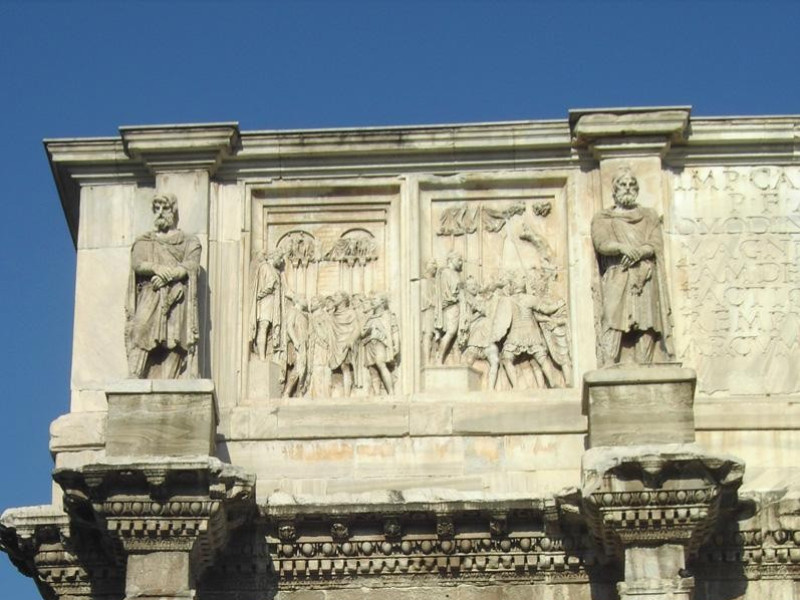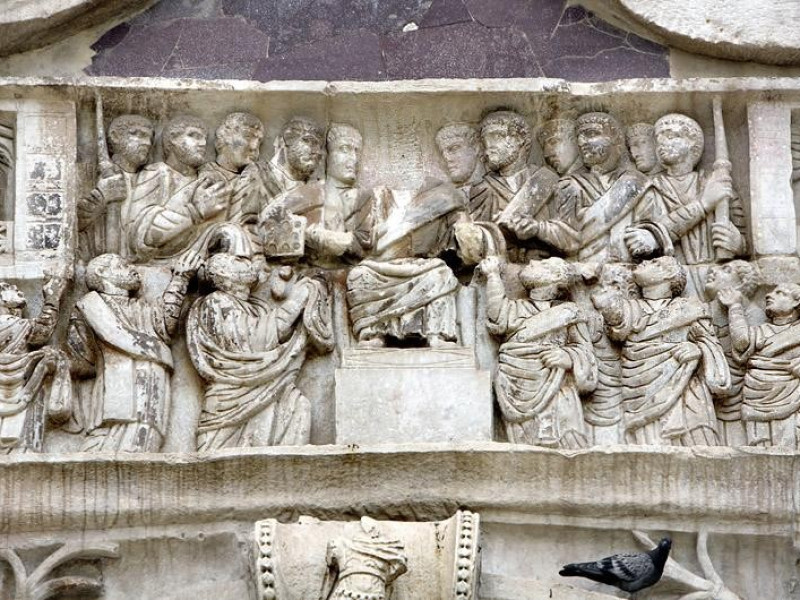Arco di Costantino
The Arch of Constantine is a triumphal arch with three openings, a short distance from the Coliseum. It can be considered as a real "museum of Roman officer sculpture". Extraordinary for richness and importance, the Arch was dedicated by the Senate to commemorate the victory of Constantine against Maxentius at the Battle of Milvian Bridge (312), and officially opened in 315. It is one of three surviving triumphal arches in Rome, in Via dei Fori Imperiali (along the Arch of Titus and Septimius Severus). It is built in square work in marble pillars, while the penthouse, which is home to an accessible space, is made by brick and cement covered with marble blocks in different shades, from reused oldest monuments. The main frame of the order consists of rectilinear elements for reuse, supplemented by Constantinian copies for protruding elements; even re-use are the Corinthian capitals, the stems in antique yellow marble and the bases of the columns. Domitian era is also the culmination of sets of central arch. Constantinian era are the arches of the central arch and smooth elements, which are often simplified and moldings with trend misaligned. The reliefs reused recall the figures of the "good emperors" of the second century. On the Arch are reused across eight slabs of one big frieze (about 3 meters tall) with battle scenes, in Pentelic marble (Greek), linked to the exploits of the Emperor Trajan during the campaigns of conquest of Dacia (102-107). Eight circular reliefs of Emperor Hadrian, more than two meters high, are placed above the side arches, on both sides, placed in a rectangular field which was originally covered with slabs of porphyry, and represent alternately scenes of hunting and sacrifice to pagan gods. Above the side arches and under the Hadrian rounds, a continuous frieze, which continues on the short sides of the monument, was carved at the time of Constantine.




